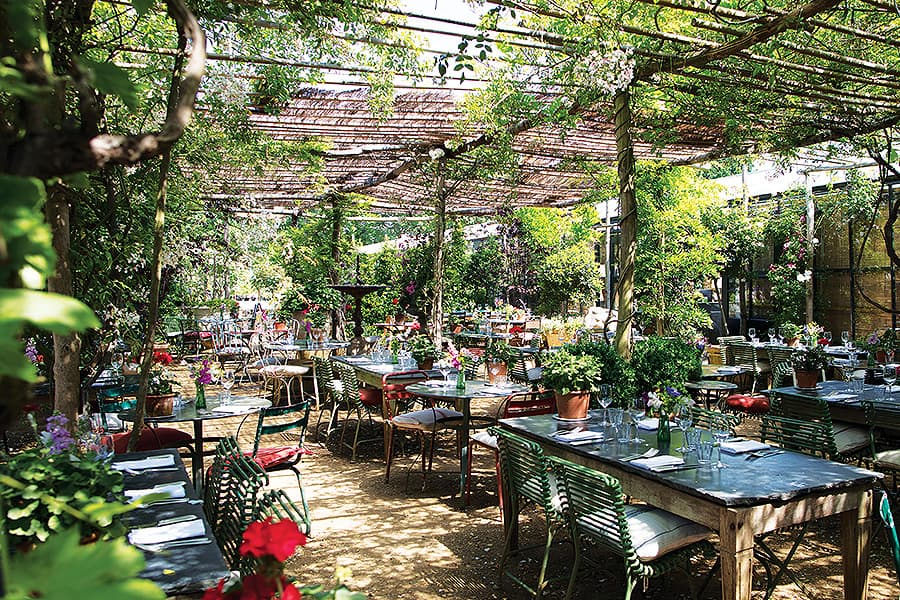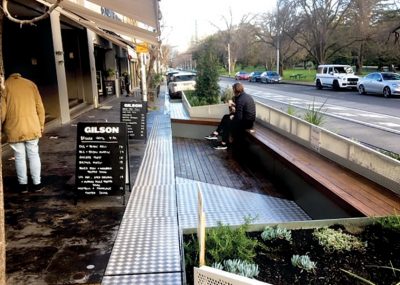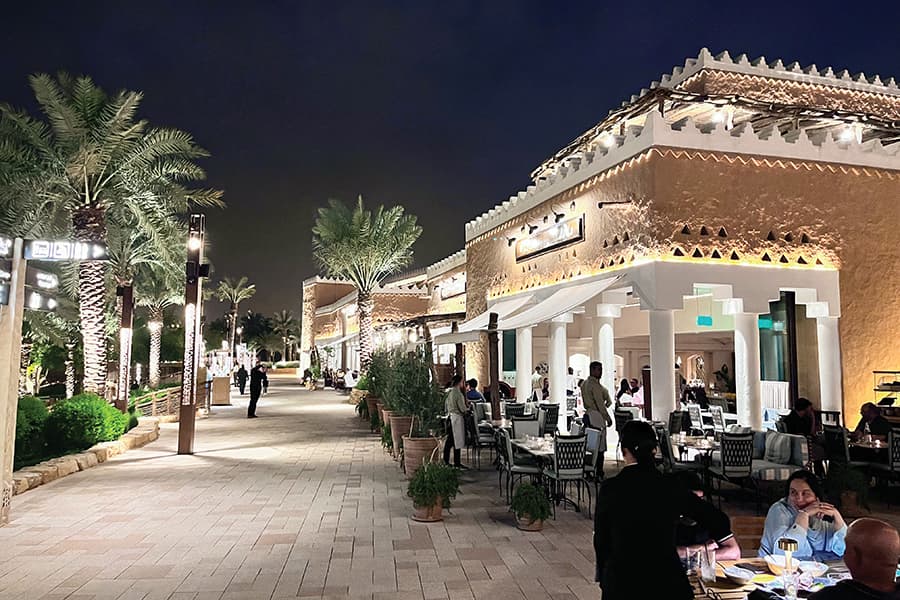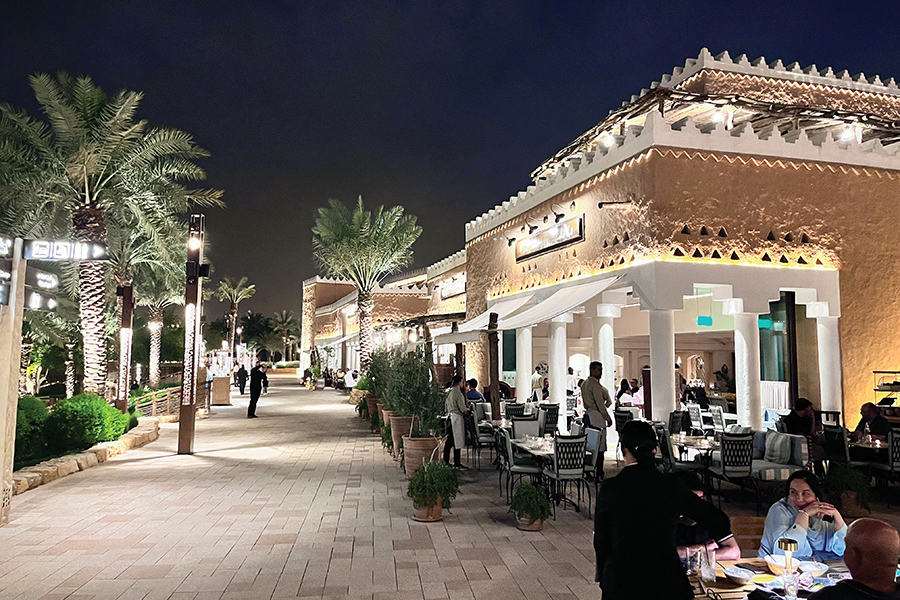Francis Loughran says the ‘mall’ is changing. So much so, in fact, that in the future we might not even call it a ‘mall’ at all. At SCN, we can’t ever remember anyone calling it a mall (except in America that is). He probably means ‘shopping centre’; point is, it’s going to change!
The calendar might say otherwise but the 21st century has just begun. In much the same way that World War I was the real start of the 20th century, this pandemic is a seismic shift from the recent past. It is not that we are all different people, it’s that external factors have been of such proportions as to fracture many existing norms and compress a decade of societal evolution into a handful of months.
From our projects across the world, we are seeing many innovative ideas to ensure that food and hospitality environments are perceived as safe spaces for target customer markets.
Coming out of ‘The Great Coronavirus Interruption’ and into the 1.5-metre economy, social venues that are going to thrive are those that can leverage a new social contract with their customers. We have become more aware of our communities and the extent to which our lives impact our immediate society and those around us; we have become more aware of food as a living eco-system and not just a production system; we have become more aware of hospitality workers and their needs.
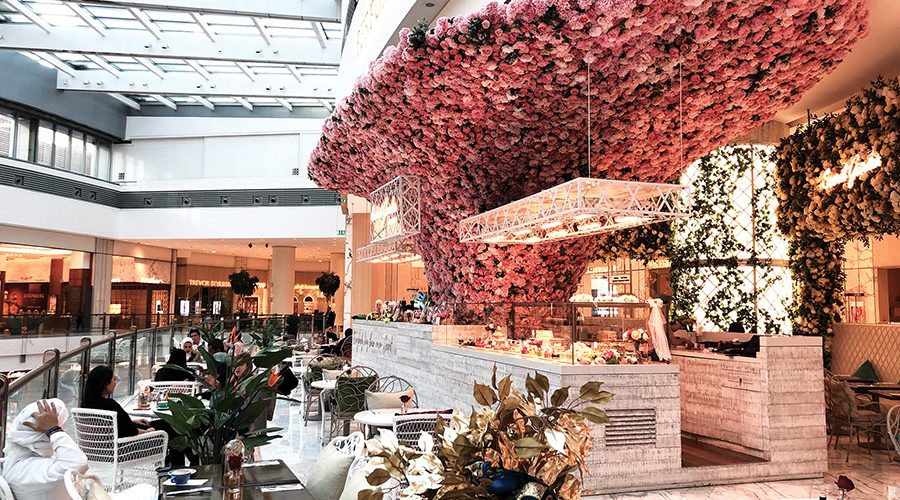
The Dubai Mall
The future success of food and beverage (F&B) operations depends on how well food and hospitality operators prepare for a re-calibrated business case so sufficient sales ensure rents can be paid; This requires food service operations to be hygienic, contactless, welcoming, authentic, technologically enabled and hospitable. Spending potential is not in question, but consumer trends are demanding the confidence of safe environments to secure that revenue.
Hospitality, as it always has been, is a reflection of ourselves, our social needs and aspirations. During the past 20 years, F&B has been at the forefront of the experience economy. However, the industry needs to incorporate a more holistic view of the world as other facets of the industry become just as important as the experience component, such as:
• Properly paid workers
• Sustainable practices – increased recycling and recyclables usage and decreased waste production
• Localisation of produce, producers and the workforce
• Sanitation/hygiene – healthy practices are about complete hygiene systems and visual assurances, rather than just placing hand sanitiser at the entrance
• Social distancing – both voluntary and mandated practices
• Technology and tech-driven solutions, including revenue diversification capability.
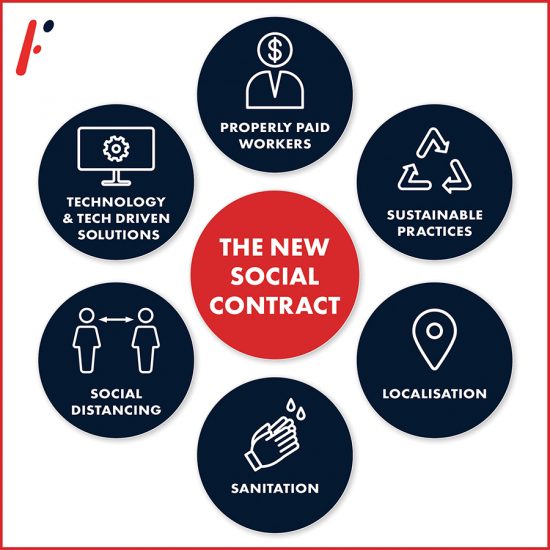
Business cases and their respective operational models have been re-calibrated to prioritise sales, regardless of consistency with pre-COVID-19 operating structures. For example, some fine dining restaurants have pivoted to take-away or dine at home offers, complete with cookery lessons, while QSR restaurants pivoted to include grocery sales, (the most obvious example being McDonald’s) in order to minimise the financial challenges of a world with substantially reduced footfall.
The 1.5-metre economy regulations prescribe lower density of patronage across public areas with a heavy impact on food service businesses; less seating in food courts, food halls, bars, cafés and restaurants, which goes directly against the established business model for shopping centres that are based on a volume sales philosophy and have historically celebrated maximum crowds, not social-distancing.
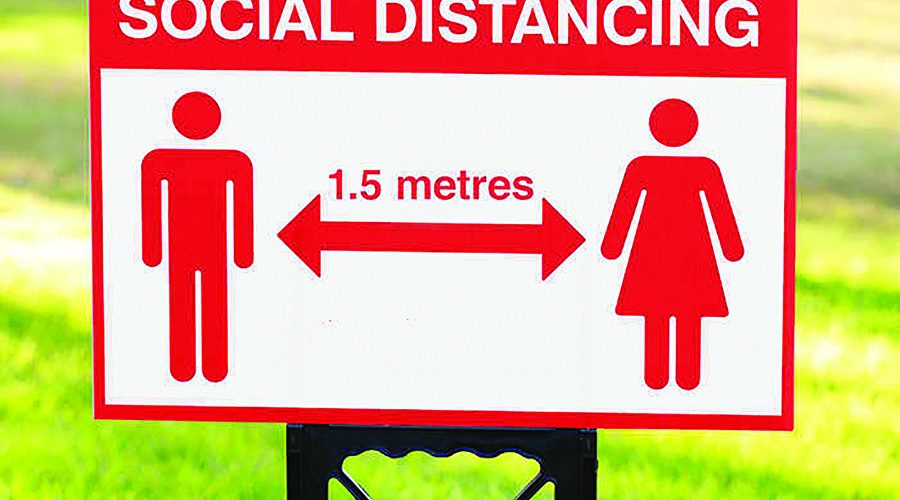
Changes in food and hospitality leasing structures
The outcomes of these impacts are noticeable components of editorial and industry comment. Relatively high rents within shopping centres and malls is changing the way food operators are considering leasable area and, in turn, leases themselves. Typically, pandemic clauses are not a feature of commercial leases and, with a lack of any benchmark or reference point, both landlords and tenants are required to navigate new territory. As such, lease terms are likely to be quite different in the future; many law firms’ editorial commentaries are noting the changes being tabled such as rental revenue based solely on turnover, break clauses and termination rights; all demonstrated outcomes of COVID-19.
But communication and compromise will need to become the foundation of future lease development “The vast majority of properties that tenants occupy are owned by superannuation funds and other vehicles that comprise of many Australians’ savings and pensions, so we have to be really careful when building in break clauses and termination rights to leases; we don’t want to discourage investors from that as it will hold us all back economically. Parties need to work collaboratively, and with a customer mindset, to allow businesses to flourish, and assets to grow in value,” says Richard Fennell, JLL’s Head of Property and Asset Management.
As such, landlords are working closely with their lawyers to sculpt the changes to food and hospitality operator leases. The nature of food and on-premise eating and dining creates a particular duty of care to protect the reputation of the food operator and the shopping centre. These will range from new council regulations, hygiene controls and training, service interruptions, social distancing, new rental structures, design requirements for service areas, operational controls, maximised seating numbers, opening hours, out-clauses, new insurances, doctrine changes regarding force majeure, dark-kitchens, online shopping rents and staff conduct, among many others.
New opportunities for food destinations in shopping centres
Across the property industry, food and hospitality in malls, airports, hotels, cinemas, stadia, commercial towers, cafés and food markets requires reinvestment in order to secure and maximise sales from the experience hungry (non-online) shopper. While shopping centre dining precincts have historically grappled to enjoy the same credibility of high street cafés, restaurants and bars, the next-normal has created an opportunity for retail centres, malls and mixed-use developments to emerge from the crisis as well-managed, hospitable and lifestyle focused ‘safe spaces’.
This will only happen if they are able to execute a food strategy that promotes open dining and drinking spaces, alfresco dining, climate-controlled spaces, dining terraces and controlled seating-zones within internalised food courts and food halls.
Managed public spaces, common areas and seating zones will need to become aligned with specific food outlets, (where possible) a clear component of a wider centre strategy to ensure that health, safety and hygiene is visually communicated at all times, reassuring customers, creating safe environments and ensuring that we continue to develop a pathway out of the impacts of COVID-19.
Fresh food precincts have shrunk over the decades as supermarkets have advanced their inventory to meet their customers’ needs but the food court has remained stable, if not grown in terms of GLA and continues to be a core component of customer spending and subsequently of centre revenue/rent. But food courts are now under threat in the 1.5m economy. A transition is required from detractive visual statements and temporary COVID-19 solutions to appealing, well-designed destinations that are as aesthetically pleasing as they are safe and controlled; utilising timber planter boxes, designed screens, hanging fixtures and greening to segment and control, rather than tape, temporary fencing and stacked up tables.
Another trend worth noting within retail is the increasing development of a new category of F&B retailing. Ghost kitchens, which have also been described as dark kitchens, cloud kitchens, delivery-only kitchens or virtual kitchens, provide alternative revenue potential for hard to rent spaces, providing access and delivery routes into and out of the centre are streamlined.
As a new rental revenue source, landlords could take their tenants to the customer. One Canadian start-up is doing just that.
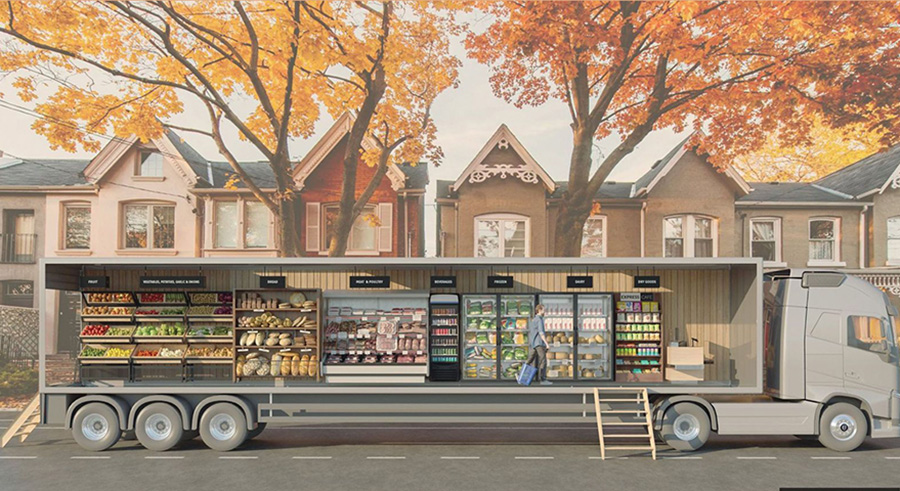
Grocery Neighbour, Canada
Grocery Neighbour is refitting truck trailers to be mobile grocery stores, allowing customers to walk through the ‘store’, touch and feel the produce, examine the meat and dry goods and then check out. The process is done in a way that is safe and convenient. Could this be a new hyper-local experience and community service perfectly tailored for a post-COVID world?
Love local. Celebrating our neighbourhoods
One of the most visible manifestations of the 1.5 metre economy will see the amalgamation of social distancing and alfresco seating. Local council dining pavement permits will play a bigger role in expanding external seating, along with the removal of car parking spaces adjacent to café precincts such as what South Yarra’s Stonnington City Council (Melbourne) has undertaken with its highly valued Domain Road Dining Precinct.
- Domain Road Dining Precinct
Local is good as it can strengthen the neighbourhood’s trading position. Proof of this is the high demand for prepared meals, take-away coffee, home meal replacement, deli products, fruit, seafood and vegetables and pick-up restaurant food during the first three stages of lockdown.
Many local retailers instantly recognised their customers’ needs and aligned express menus, prepared food and ‘safe spaces’ to bolster their sales.
Malls can reinvent vacant external shops to create community, including local fresh food streetscape shops in harmony with their supermarkets. Many malls have these spaces already; they just need to reinvent them to be local ‘safe spaces’.
In Lithuania’s capital, Vilnius, the city council has approved seating in all public plazas and streets, but while this well intentioned gesture overcomes the two-metre rule for social distancing, it has resulted in many city residents complaining about the food operators poor management of the open-air eating and drinking spaces, noise, poor end-of-day cleaning of the public areas, as well as uncontrolled garbage, discarded chairs and glassware.
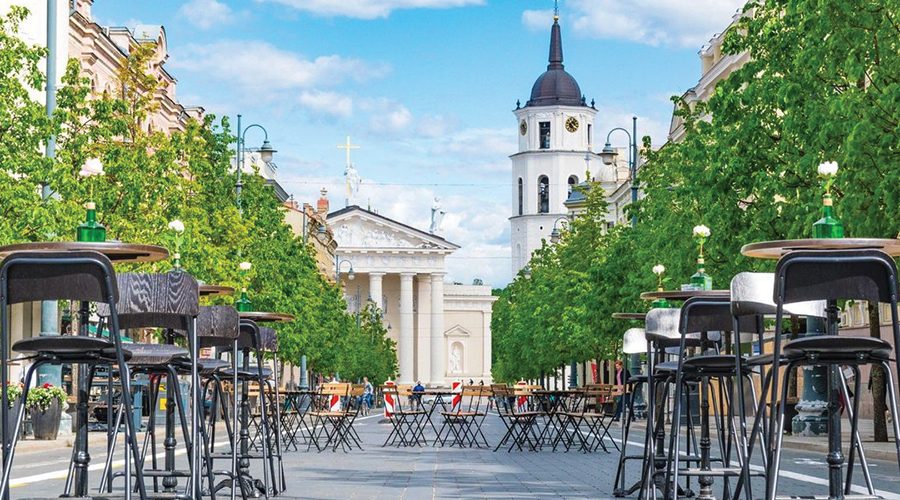
Vilnius, Lithuania
There is a lesson in this outcome that shopping centre and retail managers must take. Responsibility for public seating spaces must be clearly communicated and reinforced and it must be the specific to each food operator. It is vital to remember that sanitation is an integral part of the new social contract.
Public space design to deliver positive customer experiences
The recurrence of COVID-19 outbreaks throughout Europe, UK and Ireland are often attributed to lack of dining-dancing-drinking distancing in food and beverage premises.
Australian owners and managers must avoid the bad publicity troubling hotel groups and individual F&B operators by ensuring their businesses’ food strategies reassure the customer of their social contract through the creation of a safe space. Historical design criteria of food courts, cafés, restaurants, alfresco dining areas, supermarkets, fresh food markets and bars have been based on maximised efficiency and subsequent sales. As such, a totally new design focus is required for popular food and beverage locations in malls, retail centres, waterfronts and mixed-use developments.
We will always want to eat and drink at cafés, bars and restaurants. However, in the future, the customer will visually assess each food operation’s proposition to rate its suitability as a safe, hygienic, welcoming social space and one hopefully offering outdoor seating. People like to dine out, but they like to eat alfresco more.
Property managers must develop safe space seating and circulation plans for their food courts, food halls and common area seating close to food kiosks and takeaway etc. Food operators have a key role to play, not only in their future success, but also in the success of the malls.
Food safety practices
We’ll all be wearing face masks for the foreseeable future, we won’t be shaking hands, handling airline magazines, or lifting soiled packaging and plates from dirty food courts or café tables.
Already, we perceive a lack of discipline around hand-sanitising, seating and queuing distancing, seating ratios, food handling practices, soiled chef-uniforms, poor environmental hygiene and a lack of simple, effective customer-safe communications.
Local Council and National Food Regulations (Australia/NZ) are yet to catch up with COVID-19 food safety and environmental hygiene requirements. Food handlers’ gloves have never been compulsory, will they be now?

Food Handler’s Gloves worn by customer-facing service staff
(Image via Dosja AL)
The new competence criteria in food and hospitality
COVID-19 cases continue to flare up with no finishing line in sight and it is now time for all landlords, developers, food and hospitality operators to acknowledge that a new business case, a new set of sales-performance metrics and a new set of operating parameters provides a new social contract with their customers.
A multidisciplinary approach to hygiene, menu planning, social distancing, staff welfare, interior design, service delivery, technology, grocery shopping along with tenancy size and externalised location are no longer band-aid solutions but are the cornerstones from which food businesses can return to optimum revenue in lifestyle malls and mixed-use developments.
We must remember that the 1.5 metre economy is powered by people who are not just willing to spend but are also actively seeking the opportunity to do so. Shopping centres in the 21st century will not provide a complete offer unless the food and hospitality components celebrate all aspects of living in a strong community.
Marty Weintraub of Deloitte in Canada notes, “As fashion retailers diminish, malls will have to shift to restaurants as anchors in the post-pandemic period. Since dining out cannot be replicated online, forward-thinking mall operators will view food and beverage venues as the new anchor stores. Food and beverage floor space has increased from 5% in the 1990s to 15-20% today, and one developer said that it could rise to as much as 50% in the future”.
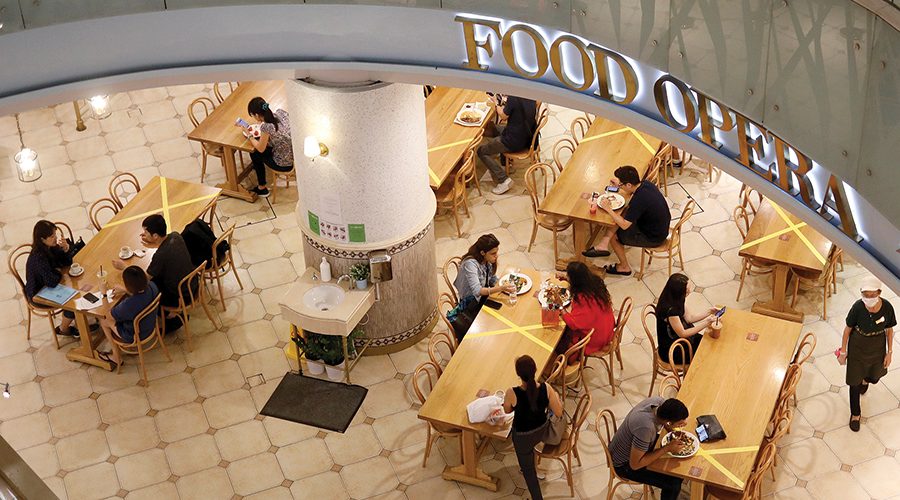
ION Mall Singapore
Landlords and retailers will, as such, have to change what the mall experience is in order to attract consumers post-pandemic. The mall of the future will be a destination that feeds the functional requirements of our lives as well as our need to be social. It will be a thriving community where people will live, work, play and eat. It will not be your parents’ mall – so much so that we may no longer call it a ‘mall’ at all.
Malls of the future will become mixed-use destinations with food and entertainment engaging an ever increasing volume of GLA. In turn, shopping centres will stimulate customer confidence and support, while maximising market share in food and hospitality projects. Think like your customer and they will return to spend on positive experiences.


